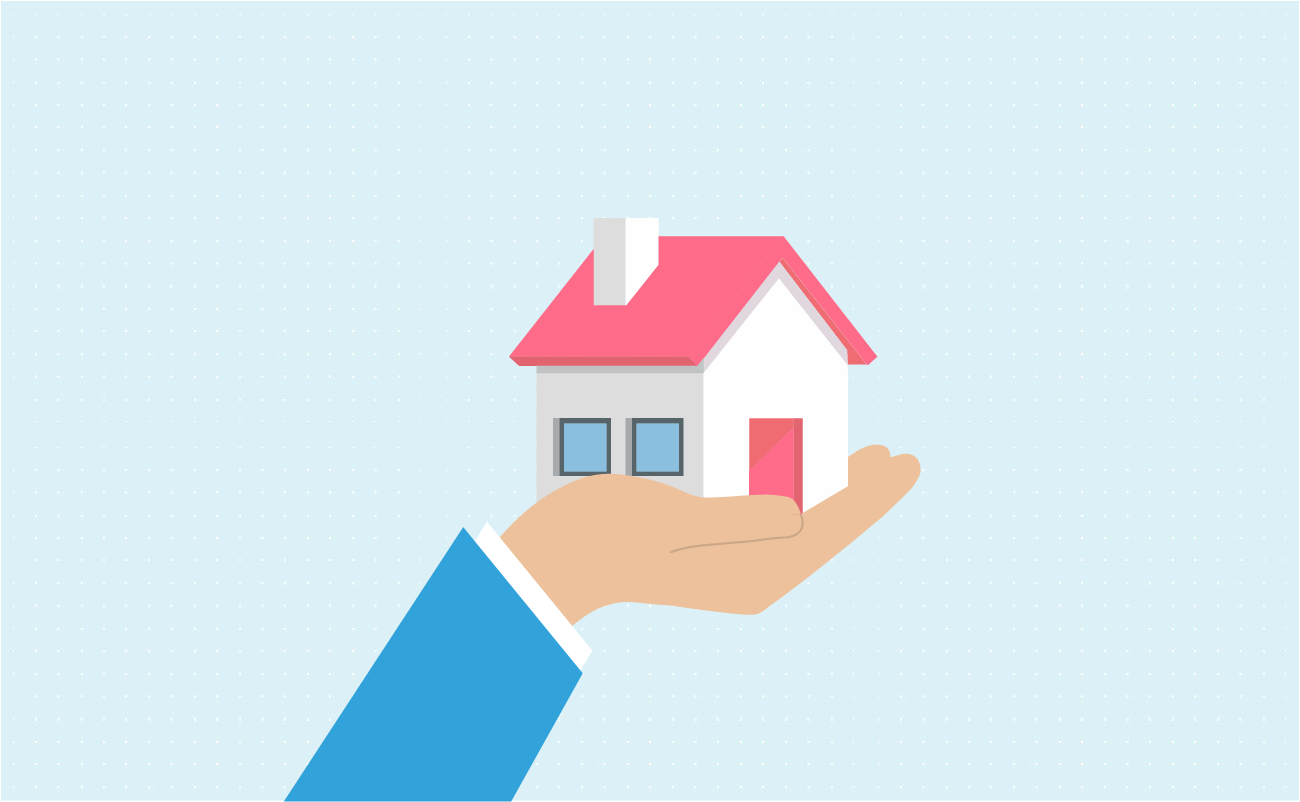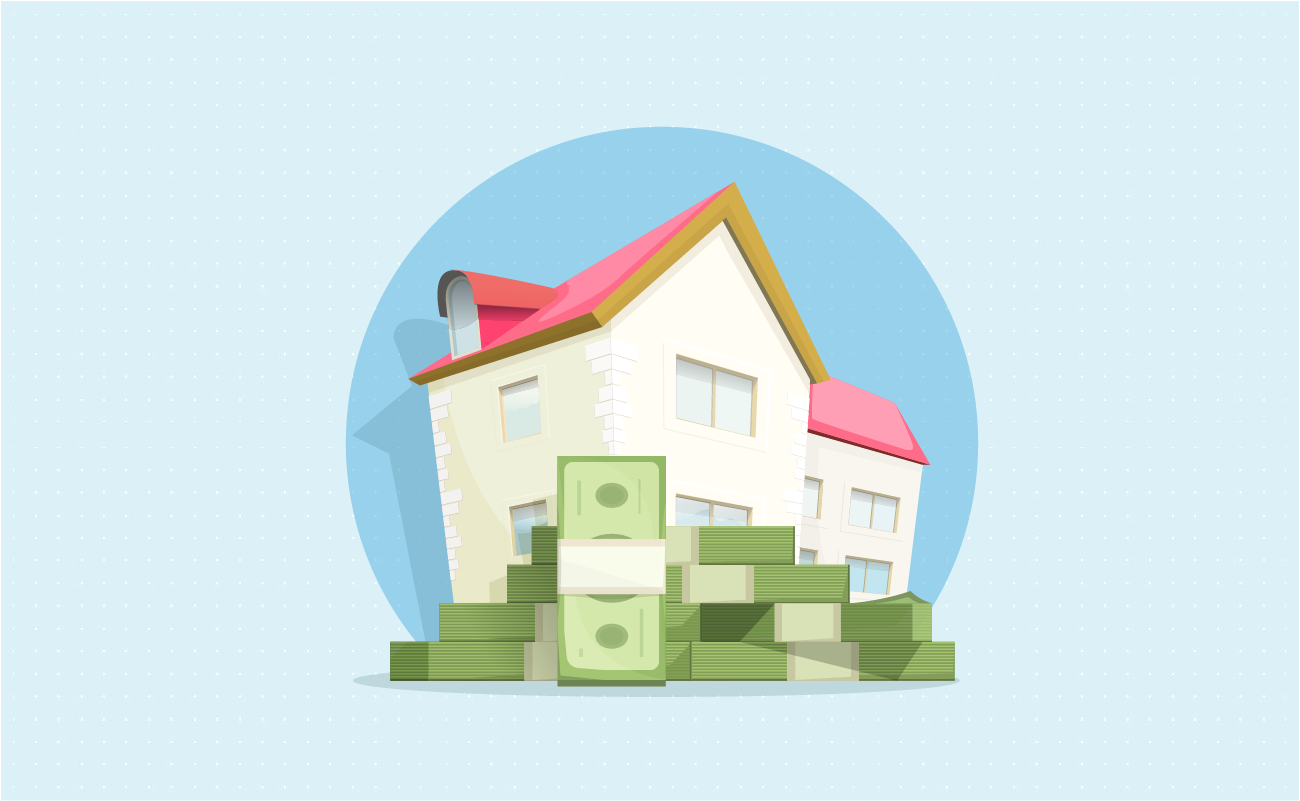Fixed Rates
30 yr
25 yr
20 yr
15 yr
10 yr
Compare Terms
Compare Rates
Real APR
Adjustable Rates
Qualification
Affordability
Renter Affordability
Rent vs Buy
Price per Square Foot
Jumbo
Home Sellers
 IO, ARM & Fixed Mortgage Payment Calculator
IO, ARM & Fixed Mortgage Payment CalculatorThis calculator that will help you to compare a fixed rate mortgage with both fully-amortizing and interest-only adjustable rate mortgages (ARMs).
Guide published by Jose Abuyuan on October 16, 2020

Buying a house involves considering many financial factors. Before applying for a mortgage, you must make sure you have a good credit score. And to save on your loan, it’s crucial to compare mortgage rates so you can choose the most favorable deal.
When it comes your homebuying, one of the first things you must decide on is the kind of loan you need. You can choose from two main types of mortgages: fixed-rate loans and adjustable-rate mortgages (ARM). And when you choose an ARM, you have the option to make interest-only (IO) payments.
Our guide will discuss the difference between fixed-rate loans and ARMs, including their advantages and drawbacks. We’ll also talk about how ARM interest-only payments work, and when it’s good to consider this payment structure. Then, using our calculator above, we’ll compare payments between fixed-rate mortgages, ARMs, and interest-only ARMs. By understanding how different mortgage options work, we hope to help you decide which loan suits you.
When you apply for a mortgage, you have two primary choices: fixed-rate loans and adjustable-rate mortgages.
Fixed-rate loans come with a locked interest rate that does not change for the entire term. This means your monthly interest and principal (P&I) payments will be the same, which makes it easier to plan your budget. Because of predictable payments, many homebuyers choose 30-year fixed mortgages. Fixed-rate mortgages adhere to a traditional amortization schedule, which breaks down the exact number of payments you need to make within a term. If you choose a 30-year fixed mortgage, this means your payments are spread across 360 monthly payments. As long as you pay on schedule, your loan will be cleared within 30 years.
On the other hand, adjustable-rate mortgages or ARMs are loans with an interest rate that changes after a certain period of time. ARMs come in 30-year terms and usually start with a low introductory rate. This initial period lasts for several years, from 3 years up to 10 years. After this fixed-rate period, your rate increases or decreases depending on market conditions. Adjustable-rate mortgages are commonly taken as hybrid ARMs, such as 5/1, 7/1, and 10/1 terms. For instance, if you choose a 5/1 ARM, your rate stays fixed for the first 5 years, after which it adjusts once every year for the remaining term.
Moreover, when you choose an ARM, you have the option to take an interest-only (IO) payment structure. This allows you to defer principal payments during the introductory phase of the loan. This option only requires you to pay interest during the first couple of years. After this period, your loan amortizes, and you must make regular principal and interest payments for the rest of the term.

More homebuyers choose fixed-rate mortgages because of its predictable payments. The locked rate assures your monthly P&I payments stay within a manageable range, even if markets rates increase. Thus, you don’t have to worry about higher payments for the entire term. Fixed-rate loans are typically taken as 30-year and 15-year terms. They are also available in 10-year and 20-year loans. Some lenders offer 25-year fixed mortgages, but they are not commonly used in America.
With fixed-rate loans, lenders absorb the risk of increasing mortgage rates. For this reason, fixed-rate mortgages usually have higher rates than ARMs, especially if you take a 30-year term. Longer terms usually have higher rates because they carry more duration risk.
Over time, inflation threatens to decrease the dollar value, which makes extended loans less profitable for lenders. To hedge against this risk, lending institutions impose higher rates to longer terms. In contrast, shorter terms have lower rates because borrowers pay for them sooner. The short term also accrues lower interest costs over the life of the loan.
Below is a table that shows fixed-rate mortgage terms and their corresponding rates as of October 14, 2020:
| Loan Term | Mortgage Rates (APR) |
|---|---|
| 30-Year Fixed | 3.36% |
| 20-Year Fixed | 3.28% |
| 15-Year Fixed | 2.87% |
| 10-Year Fixed | 3.18% |
Most borrowers take 30-year fixed mortgages even if they have higher rates. It’s attractive to borrowers because longer terms come with more affordable monthly payments. If you’re a first-time homebuyer with limited income, low monthly payments are easier on your budget. Moreover, the longer term allows you to qualify for a larger loan. This means you can purchase a bigger house or buy property in a better location.
On the other hand, shorter terms come with expensive monthly payments, making them less popular to consumers. This is the trade-off for the lower interest rate and paying your loan sooner. Payments are more expensive because your loan must be paid within a narrower time frame. But compared to a 30-year term, it will save you tens and thousands of dollars on interest costs.
To understand how term length affects fixed-rate mortgage payments, let’s take the example below. In this scenario, your home is priced at $350,000 and you made a down payment of $70,000 to bypass private mortgage insurance. Let’s compare payments between a 15-year fixed mortgage and 30-year fixed mortgage.
Home price: $350,000
Down payment: $70,000
Loan amount: $280,000
| Loan Term | 15-Year FRM | 30-Year FRM |
|---|---|---|
| Interest rate (APR) | 2.87% | 3.36% |
| Monthly P&I payment | $1,916.17 | $1,235.55 |
| Total interest | $64,910.66 | $164,796.45 |
To estimate the results above, we used the mortgage payment calculator.
The example shows your monthly P&I payment will be $680.62 more expensive with the 15-year fixed mortgage than the 30-year fixed mortgage. This is a considerable sum which is not affordable to other borrowers. However, if you can afford to take the 15-year fixed-mortgage, you’ll save a total of $99,885.79 on interest costs compared to the 30-year term. You’ll pay off your loan in half the time while maximizing your interest savings.
Taking a shorter term costs less over the life of the loan. This is the reason why financial experts recommend choosing a short-term mortgage. However, in reality, many borrowers cannot not qualify for a shorter term. This may be due to poor credit and insufficient funds. But don’t worry. There’s still a way to reduce your term and interest expenses.
If you have a 30-year fixed mortgage, you can make extra payments to pay off your mortgage sooner. Making additional payments reduces your principal faster, thus decreasing your interest costs. This strategy can shave a couple of years off your term and save you thousands of dollars on interest expenses.
On the downside, qualifying for a fixed-rate loan may be difficult for certain borrowers. To be eligible for a fixed-rate loan, you must have a clean credit history and a good credit score. If you have a low credit score, you might have an easier time obtaining an ARM. ARMs have more relaxed credit standards compared to fixed-rate loans.
Furthermore, if you’re assigned a high rate, you’ll end up with an expensive mortgage. You cannot make lower monthly payments when market rates significantly decrease. The fixed rate will force you to keep making expensive payments for the entire term. The only way you can change into a lower rate is to refinance your mortgage.
The following table summarizes the benefits and drawbacks of choosing fixed-rate mortgages:

| Pros | Cons |
|---|---|
| Your rate remains the same for the rest of the loan. | Comes with a higher rate than ARMs as a trade-off for stability. |
| Your monthly P&I payments stay the same. | Qualifying for a fixed-rate loan might be harder than an ARM. |
| No surprise increases that cause payment shock. | You can only change to a lower rate by refinancing your mortgage. |
| Your mortgage payments are easier to budget. | You pay the same rate even if market rates drop. |
| Helps you build significant equity early on. | You cannot make lower monthly payments when rates drop. |

Adjustable-rate mortgages (ARM) usually have a lower initial rate than fixed-rate loans. Borrowers find this appealing because it allows them to make affordable payments during the introductory period. But after this introductory phase, your mortgage rate can increase or decrease depending on market conditions. When index rates rise, it results in higher monthly payments, and vice versa. Thus, you must be ready to cover increasing payments throughout the loan.
Experian notes that ARMs are a common type of subprime mortgage. This means they are accessible to borrowers with limited or poor credit. ARMs may be easier to obtain than fixed-rate loans that have stricter credit standards. Because they start off with low rates, ARMs are also considered by borrowers with fair to good credit ratings. However, the unpredictable rates and increasing payments also make ARMs risky to borrowers.
ARMs come in 30-year terms with an introductory period that lasts for a few years. You can choose from 3/1, 5/1, 7/1, and 10/1 ARMs. During the introductory period, you have the option to take an interest-only (IO) payment. This allows you to defer principal payments, only requiring you to pay interest during the introductory phase. After this period, you must make principal and interest payments.
For instance, in a 7/1 ARM, the 7 refers to the length of the introductory period which is 7 years. Meanwhile, 1 indicates your rate’s adjustment frequency, which is once every year. After the introductory period, your rate adjusts according to the reference market index which your loan is based.
The following table shows different ARM terms and their corresponding rates as of October 14, 2020:
| Loan Term | Mortgage Rates (APR) |
|---|---|
| 10/1 ARM | 3.94% |
| 7/1 ARM | 3.97% |
| 5/1 ARM | 4.07% |
The low initial payments on ARMs enable borrowers to qualify for a bigger loan amount. With a larger loan, you can buy a bigger house or choose property in a better neighborhood. The affordable initial payments may also allow you to prepay your mortgage. ARMs are beneficial for borrowers if market rates continue to reset low. On the other hand, if rates continue to rise, it can cause payment shock. To avoid this risk, many ARM borrowers eventually refinance into a fixed rate loan to secure a low rate.

Refinancing is basically replacing your existing mortgage with a new loan. This enables you to shift to a lower rate or change your term, which can help maximize your savings. But take note: You’ll need a credit score of at least 620 to qualify for refinancing. It also comes with steep closing costs, which is usually 2%-5% of your loan. To compensate for this expensive sum, try to refinance 2 percentage points lower than your original rate. This will help you recoup the cost of refinancing to reach a breakeven point within a few years.
In reality, mortgage rates are bound to increase at some point. If you’re taking an ARM solely for low monthly payments, this is not a good idea, especially if you have limited funds. Increasing rates can make your payments unaffordable. When that happens, it puts your house at risk of foreclosure. Thus, many ARM borrowers eventually refinance into a fixed-rate mortgage.
Another problem you may encounter with ARMs is negative amortization. This happens when your monthly payments fail to cover your loan’s interest costs. It increases your principal balance instead of reducing it gradually. If this happens, you might end up owing more on your mortgage than the home’s actual value.
To summarize the advantages and drawbacks of ARMs, we made the table below:

| Pros | Cons |
|---|---|
| Usually comes with a lower initial rate than fixed-rate mortgages. | Your mortgage rate eventually changes after the introductory period. |
| A lower rate means affordable monthly payments than fixed-rate loans. | Your rate may increase, resulting in higher monthly payments. Can cause payment shock. |
| May be easier to qualify for than a fixed-rate loan, accessible to borrowers with low credit scores. | You may encounter negative amortization, where you owe more on your mortgage than the home’s value. |
| The low initial rate may allow you to qualify for a larger loan. | If rates keep rising, it can make your monthly payments unaffordable. |
| If interest rates reset lower, you can make lower monthly payments. | Compared to a fixed-rate loan, ARM’s make it harder to plan your budget. |
An interest-only (IO) option is a payment structure where borrowers are only required to pay interest for a certain period of time. Instead of making the usual monthly principal and interest payments, paying down your principal during the interest-only period is not mandatory. This period usually lasts for a short term, typically 5, 7, or 10 years. After this period, your loan amortizes for the remaining 30-year term.
The interest-only payment structure is a common feature in ARMs. If you get an interest-only ARM, you’re only required to pay interest during the introductory period. For instance, with a 5/1 ARM, you only need to cover the interest for the first 5 years of the loan, after which your rate will adjust annually. Once this period is over, your loan starts to amortize, which means you must make monthly principal and interest payments for the rest of the term.
On the other hand, you can make a one-time lump sum payment called a balloon payment to pay off the remaining balance. This is typically done by borrowers who sell their homes before the interest-only period ends. If you’re not planning to stay in the house for good, consider this option.
Instead of letting your mortgage amortize, making a balloon payment helps you avoid expensive interest costs. The process also allows you to pay off your debt sooner, which improves your credit rating. The balloon payment strategy is also used by house flippers who buy old property to renovate and sell into the market.
Interest-only loans can work for borrowers who are expecting an increase in their income. The initial period lets you defer principal payments, allowing you to save and prepare funds before the loan shifts into an amortizing loan.
The low monthly payments also enable you to qualify for a bigger loan amount. If you have more money coming in, you can make extra payments to prepay your mortgage. The affordable monthly payments can also help you invest money in other lucrative ventures.
However, it also comes with drawbacks. If you take an interest-only ARM, you won’t be able to gain home equity for several years. Even if you have time to save, you’ll likely be tempted to spend your money instead of saving or investing. And if you decide to make extra payments, you might have to deal with prepayment penalty charges.
Furthermore, once the interest-only payment ends, you must start making principal and interest payments, which significantly increases your monthly payments. This can strain your finances, causing payment shock. Finally, if rates continue to increase, it puts you at risk of negative amortization. Ultimately, you might lose your home to foreclosure if you’re unable to afford higher payments.
The following table summarizes the pros and cons of interest-only loans:

| Pros | Cons |
|---|---|
| The interest-only period only requires you to pay the interest. | You do not build home equity during the interest-only period. |
| Your monthly payments will be more affordable. | You’ll be tempted to spend your money instead of saving or investing. |
| The low monthly payment allows you to qualify for a larger loan amount. | If you prepay your loan early into the term, you might have to pay prepayment penalty fees. |
| The low monthly payments may allow you to prepay your mortgage. | Once you pay the principal and interest, your monthly payments will significantly increase, leading to payment shock. |
| Enables you to save and invest money on other worthwhile business ventures. | After the interest-only period, your rate can increase, making monthly payments more expensive. |
| Your monthly payments for the interest-only period qualifies as tax-deductible. | You might face negative amortization, where you owe more on your mortgage than the home’s value. |

Many variables affect how rates increase and impact ARM payments. As you may have noticed, it’s more complicated than estimating monthly payments for fixed-rate mortgages. Before you choose this loan option, learn about its different components below:
And index is a standard interest rate that reflects general market performance. Lenders refer to many types of indexes to establish mortgage rates. Your ARM’s interest rate will adjust based on the performance of a specific index and your loan’s margin. When you take an ARM, your lender typically chooses which reference index will be used. Once this is selected, you cannot change your index after closing.
The following are commonly used indexes for mortgage rates:
When you obtain an ARM, you agree to pay a higher percentage than the referenced index rate. The ARM margin is the percentage point added to your referenced index rate to determine the fully indexed rate of your loan. If you have a high credit score, you are usually assigned a lower ARM margin. This results in a lower interest rate for your mortgage. Meanwhile, if you have a lower credit score, you’re usually given a higher ARM margin. Likewise, this makes your total interest payments more expensive.
Your rate adjustment frequency determines the number of times your rate adjusts after the introductory period ends. The higher your frequency rate, the more expensive your interest costs throughout the entire loan. Generally, ARM rates adjust once every year. But depending on the type of ARM you choose, some may adjust every 6 months or every month. A longer period between rate adjustments is ideal for borrowers.
Rate caps put a limit on how much your interest rate can increase throughout the loan. This determines how high your maximum monthly payment can get. Two different lenders may start off with the same initial rate, but they may have different rate caps. A higher rate cap results in more expensive monthly payments. Try to get an ARM with a lower rate cap to keep your payments within an affordable range.
There are three main types of rate caps:
1
Initial adjustment cap – This limits how much your rate can increase the first time it adjusts, which is right after the introductory phase. The initial adjustment cap is typically around 2 to 5 percent higher than the introductory rate.
2
Subsequent adjustment cap – This limits how high your rate can increase in the adjustment periods that follow. It is usually around 2 percent higher than the introductory rate.
3
Lifetime adjustment cap – This cap limits the maximum interest rate on your ARM. It is usually around 5 percent higher than the introductory rate, though other lenders may require a higher lifetime adjustment cap.
Calculating payments to compare a fixed-rate loan, ARM, and interest-only ARM can get quite complicated. But to make things more convenient, you can use our calculator above this page. To understand how this works, let’s take the example below.
Suppose you’re buying a house priced at $550,000. To bypass private mortgage insurance, you made a 20 percent down payment of $110,000. Now you’re deciding whether to get a 30 year fixed-rate loan, 5/1 ARM, or a 5/1 interest-only ARM. In this example, the 30-year fixed-rate loan is 3.36 percent APR, while your ARM rate is 4.07 percent APR. See the table below.
Home price: $550,000
Down payment: $110,000
Loan amount: $440,000
Loan term: 30 years
Fixed interest rate: 3.36%
5/1 ARM beginning interest rate: 4.07%
ARM Expected initial adjustment: 1.25%
ARM Expected subsequent adjustments: 0.25%
ARM Rate cap: 8
| Loan Details | Fixed-Rate Loan | ARM | Interest-only ARM |
|---|---|---|---|
| Beginning monthly P&I payment | $1,941.57 | $2,118.42 | $1,558.33 |
| Total monthly payments | $698,966.35 | $975,105.67 | $945,999.36 |
| Total interest | $258,966.35 | $535,105.67 | $945,999.36 |
| Maximum monthly payment | $1,941.57 | $2,948.12 | $2,933.33 |
Based on the example, the fixed mortgage will have a monthly P&I payment of $1,941.57. This is $176.85 more affordable than the ARM’s beginning monthly payment, which is $2,118.42. Meanwhile, the interest-only ARM payment will cost $1,558.33. Since you only pay for the interest during the introductory period, this is more affordable than beginning monthly payments for the fixed-rate loan and ARM. The interest-only ARM is cheaper by $383.24 than the fixed rate loan, and cheaper by $560.09 than the ARM.
Meanwhile, the maximum monthly payment for the ARM will be $2,948.12. This is $1,006.55 more expensive than the monthly payment for the fixed-rate loan. The ARM is also slightly higher by $14.79 than the maximum payment for the interest-only ARM.
Finally, savings are more evident when we look at the total interest costs. If you choose the fixed-rate loan, you’ll spend $258,966.35 on overall interest. But if you take the ARM, your total interest costs can be up to $535,105.67. This means if you choose the fixed-rate loan, you can save up to $276,139.32 on interest charges.
On the other hand, if you take the interest-only ARM, your total interest cost can be up to $945,999.36. This is largely more expensive by $687,033.01 than the fixed-rate loan, and $410,893.69 more expensive than the ARM. Your total interest cost far exceeds your actual loan amount. To avoid this, you can eventually refinance into a fixed-rate loan or sell your house.
This example shows it’s better to take a fixed-rate loan when the rate is lower than an ARM. It’s also worth noting that total interest costs for an interest-only ARM can get really expensive if interest rates increase over the life of the loan. This is the reason why many interest-only ARM borrowers eventually refinance or sell their property.
Now, what if your ARM rate is lower than the fixed-rate loan? In our next example, given every variable is the same, let’s suppose your fixed-rate mortgage is 4 percent APR, while the ARM rate is 3 percent APR.
Home price: $550,000
Down payment: $110,000
Loan amount: $440,000
Loan term: 30 years
Fixed interest rate: 4%
5/1 ARM beginning interest rate: 3%
Expected initial adjustment: 1.25.%
Expected subsequent adjustments: 0.25%
Rate cap: 8
| Loan Details | Fixed-Rate Loan | ARM | Interest-only ARM |
|---|---|---|---|
| Beginning monthly P&I payment | $2,100.63 | $1,855.06 | $1,558.33 |
| Total monthly payments | $756,225.16 | $884,460.99 | $945,999.36 |
| Total interest | $316,225.16 | $444,460.99 | $945,999.36 |
| Maximum monthly payment | $2,100.63 | $2,765.35 | $2,933.33 |
In this example, the fixed-rate loan’s monthly P&I payment will be $2,100.63, while the ARM’s beginning monthly payment will be $1,855.06. You’ll save $245.57 per month if you choose the fixed-rate loan. Because of the lower rate, the monthly payment for the ARM is cheaper than the fixed-rate loan. On the other hand, the interest-only ARM will have a beginning monthly payment of $1,558.33. Again, this is cheaper than beginning monthly payments for the fixed-rate loan and the ARM.
Meanwhile, the maximum monthly payment for the ARM will be $2,765.35. This is $664.72 more expensive than the monthly payment for the fixed-rate loan. However, the ARM is slightly cheaper by $167.98 than the maximum payment for the interest-only ARM.
When it comes to interest costs, with the fixed-rate loan, you’ll spend $316,225.16 on overall interest. If you take the ARM, your total interest cost can be up to $444,460.99. This is higher by $128,235.83 than the fixed-rate loan. And if you take the interest-only ARM, your interest cost can be up to $945,999.36 if rates continue to increase. With an interest-only ARM, though your initial monthly payment may be low, your total interest cost can be a lot more expensive than your actual loan amount.
In this example, it’s worth taking an ARM especially if your rate remains low throughout the term. Your monthly payments will be more affordable during the introductory phase. Just make sure you can cover the maximum monthly payment when your rate increases. If you decide to take an interest-only ARM, again, your total interest costs may far exceed the amount you borrowed. To avoid this, many interest-only ARM borrowers eventually refinance to a fixed-rate loan or sell your house.

When it comes to homebuying, you can choose from two primary types of mortgages: fixed-rate loans and adjustable rate mortgages (ARM). Choosing a good loan partly depends on current mortgage rates and your long-term housing plans.
The most popular loan chosen by most borrowers is the 30-year fixed-rate loan. More borrowers take it because it comes with affordable monthly payments than shorter terms. The locked interest rate also guarantees predictable monthly P&I payments that stay the same for the entire term. It’s a practical choice for people who have decided on buying a long-term residence.
Meanwhile, borrowers consider ARMs when they don’t plan to stay long in a house. If you’re just looking for a starter home, and will eventually move to a bigger house, this is a viable option. It’s advantageous to take an ARM when rates are lower than fixed-rate loans. You can benefit from making lower monthly payments during the introductory period. Before this period ends, you can sell the house to avoid higher payments.
ARM borrowers also have the option to make interest-only payments on their loan. This means you’re only required to make interest payments during the introductory phase, which makes your monthly payments even lower. Likewise, you can sell your house before you start making P&I payments and the rate starts to increase. Many ARM borrowers also eventually refinance into a fixed-rate loan to secure a lower rate.
If ARM rates are higher than fixed-rate loans, it makes better sense to choose a fixed-rate option. This way, you’ll have affordable monthly payments without worrying about increasing rates in the future.
Are you shopping for rates to secure a favorable deal? Use our mortgage rate comparison calculator.
Jose Abuyuan is a web content writer, fictionist, and digital artist hailing from Las Piñas City. He is a graduate of Communication and Media Studies at San Beda College Alabang, who took his internship in the weekly news magazine the Philippines Graphic. He has authored works professionally for over a decade.